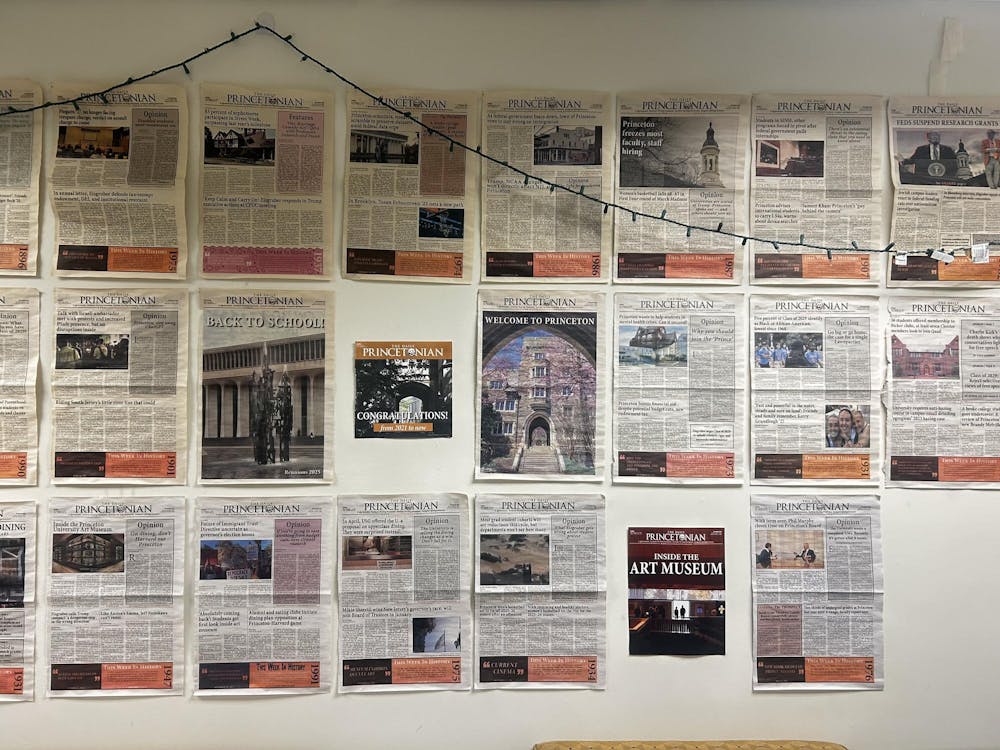I don't remember much about the fall of the Berlin Wall. It was a snow day; I was in my room, humming along to the radio, when my father came in to get me. "There's something interesting on the news," he said. I walked into the family room to the TV still-frame of a little boy with dark hair and eyes, before the image became a rush of grown men waving flags that morphed into a sea of faces and waving arms. I didn't understand then the magnitude of the tableau, a fact I regret now.
I lived a year on a border as real as Berlin's, only less renowned. An exchange student in Italy, I was sponsored by the Rotary club of Gorizia, a town made famous in Ernest Hemingway's "Farewell to Arms." The novel's first page presents the pleasant, sleepy town on the Isonzo River where I went to school and Italian class, shopped and visited friends. Gorizia, born as the Austrian dukedom of Gorz, only became Italian in the aftermath of World War I. The divisiveness of the Italian Fascist colonialism and ethnic tensions of World War II then led to the city's partition, with the eastern 30 percent becoming the Yugoslavian, and now Slovenian, city of Nova Goriza.
Such history is ever present. The bridge over the Isonzo, the river that saw so many Great War battles that it "ran red with blood," bears a dedication to "the Boys of 1899." My host cousin has dedicated his attic overlooking the river to a World War I museum, displaying the requisite uniforms and medals next to the weapons and bottles he's collected along the banks. I've seen the trenches on the hill overlooking the nearby town of Medea, where the Ara Pacis monument hosts earth and water from all the major land and naval battlefields. Occasionally the President of the Republic comes here to pay his respects.
Fascism and World War II also left shadows. Under Mussolini, the presence of a large Italian-speaking population justified expansion into Istria (now Croatia and Slovenia), but such colonialism horribly oppressed communities of other ethnicities and religions. This region's diverse peoples had coexisted peacefully for hundreds of years, but the age of competing nationalisms brought strife.
When Italy, an Axis power, was forced to sign the armistice with the Allies on Oct. 8, 1943, German retribution against the traitorous betrayal was swift. The entire area of Northern Italy was occupied in days. The Nazis planned to separate from the rest of Italy the Adriatisches Kunstenland — areas of Friuli-Venezia Giulia, the Veneto, and Trent with large German-speaking populations — and annex it to the Third Reich. The Germans also invaded Italian-held Istria, resulting in partisan activity of two different stripes: to the west, Italian nationalism, and to the east, Yugoslavian red Communism. In fact, the only concentration camp in Italy, the Risiera di San Sabba in Trieste, detained more Yugoslavian partisans than Jews.
The German retreat in late April 1945 saw bloody conflict between Italian and Communist Yugoslavian partisans fought out on Italian soil. To resolve the regional conflict, the Allies adopted the strategy to soon become infamous in Berlin: the drawing of an arbitrary border. Trieste was named an international free zone and remained thus until 1950, but Gorizia was divided, windows bordered up and walls constructed. Families found themselves on the opposite side from their loved ones; people lost homes and businesses without legal recourse. My host counselor once pointed out to me the beautiful old train station just across the green wire fence border "stolen" in the division.
From the USSR's dissolution, Italy's Yugoslav neighbors have become Slovenians. And as Berlin's wall fell, this border too will dissolve when Slovenia enters the European Union just seven months from now, in May 2004. The countries have already begun to embrace each other. Slovenia has made progress in reparations for lost property, cross-border coordination of train and bus lines, and adoption of the euro. On the Italian side there are Slovenian-language schools, streets of Slovenian stores, even a Slovenian political party. The history of conflict, however, may slow reconciliation, just as joint Italian-Slovenian efforts to fight this summer's rash of forest fires were complicated by unpredictable explosions of landmines left over from both world wars.
As an adopted Italian, I eagerly await the unification ceremony. This time I understand what it means for a boundary to disappear, the faces on TV will belong to people I know, and the place being healed is also my home.

Emily Stolzenberg is a freshman from Morgantown, W.Va.








